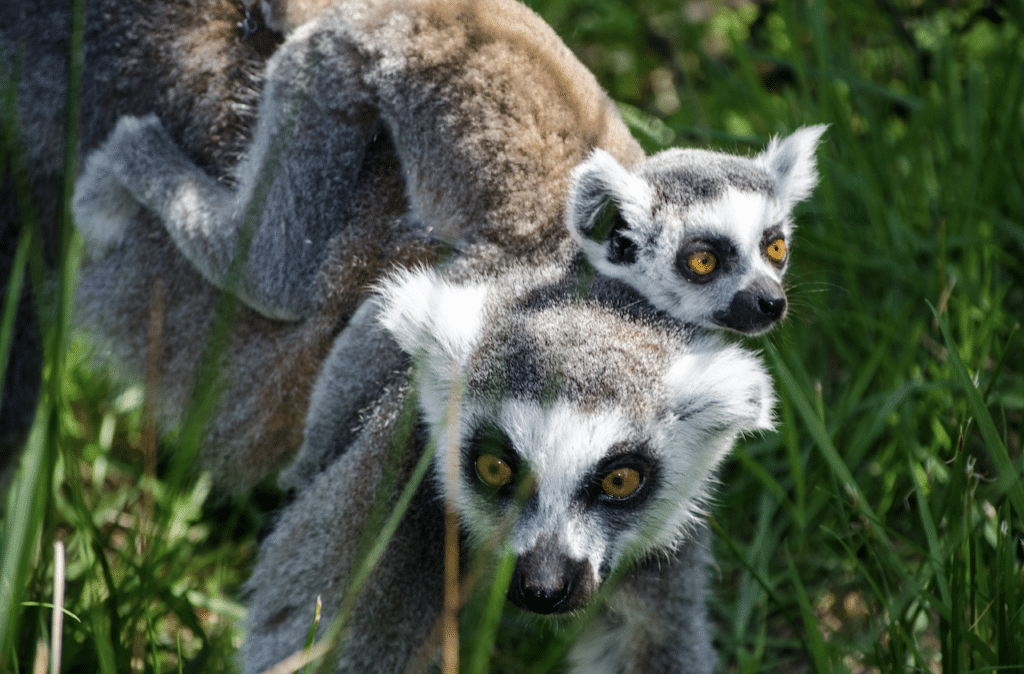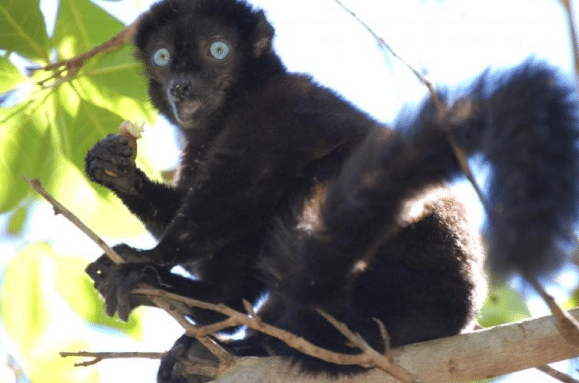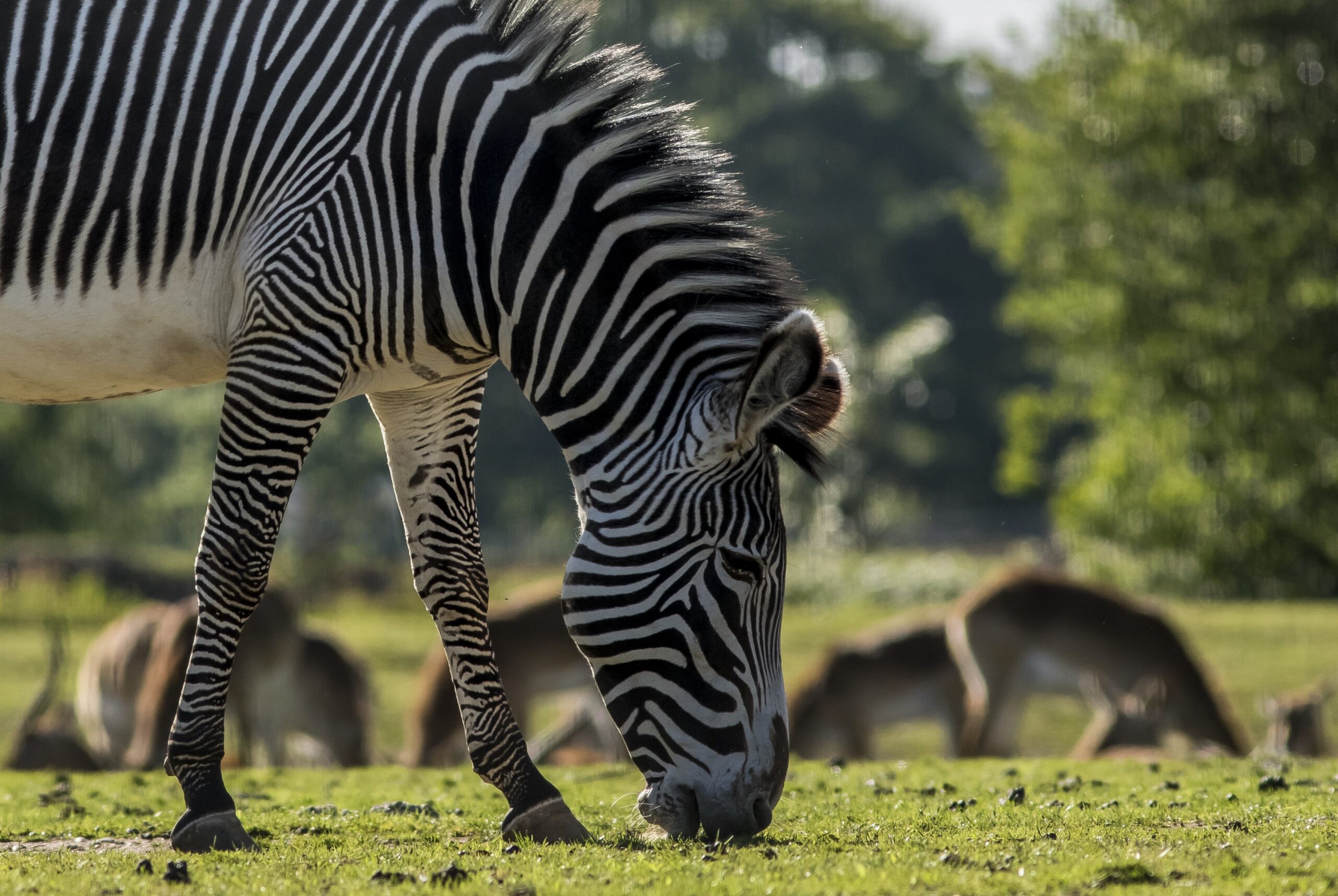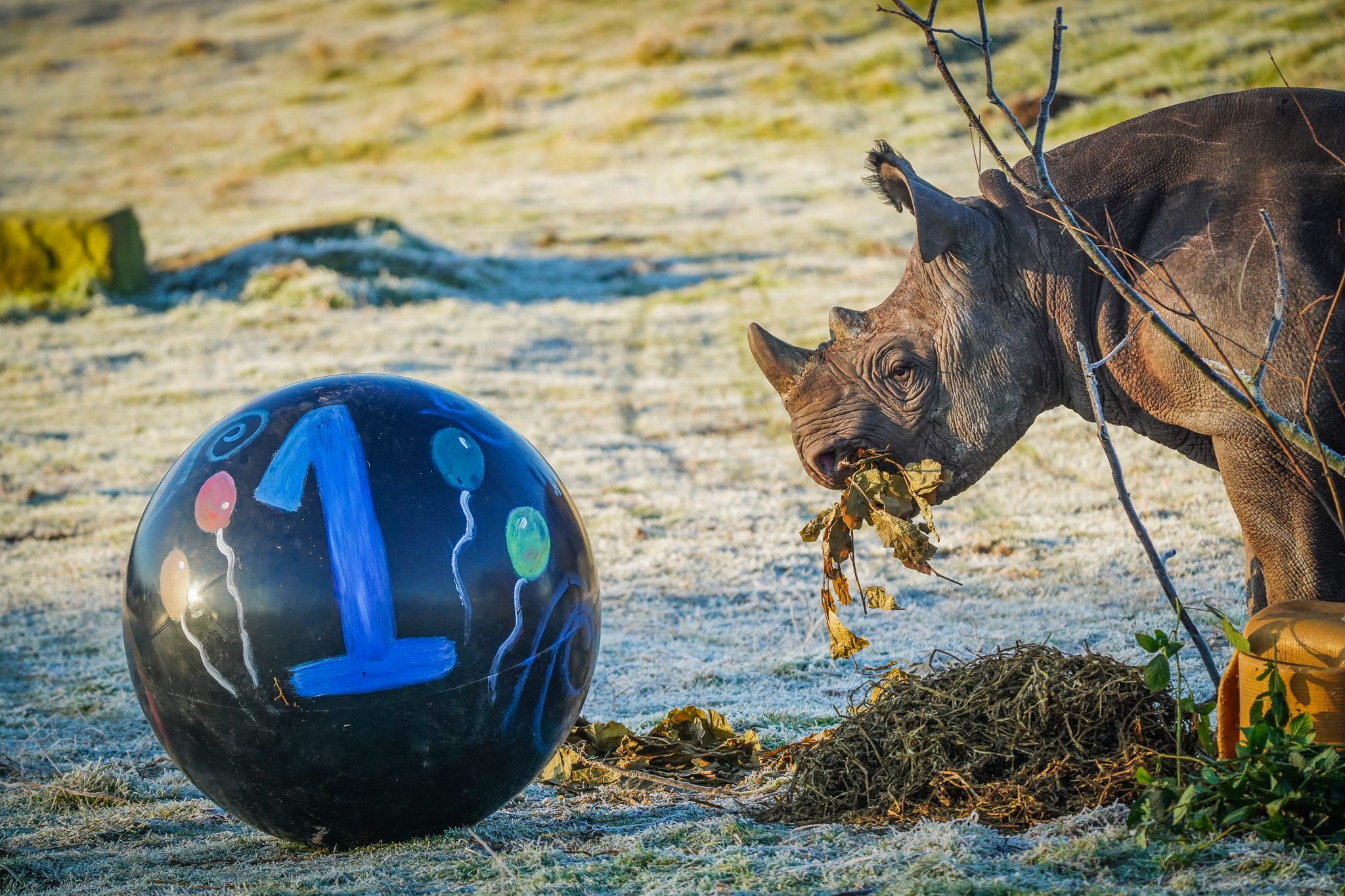Happy Lemur Day! Lemur Day is celebrated annually on the last Friday of every October and this year it’s on the 27th of October. The day brings awareness to the importance of lemur conservation and protection of their sole natural habitat; the island of Madagascar, as well as celebrating lemur diversity.
At WildLife Foundation we support greater bamboo lemurs and red-bellied lemurs both of which are under threat. With there estimated to be a global population of only 600 greater bamboo lemurs, this makes today even more important for raising awareness of these primates and the threats they face.


We are proud to support The French charity, Helpsimus who have benefitted from WildLife Foundation’s funding to protect greater bamboo lemurs and red-bellied lemurs in the Madagascan rainforest. This project has two aims: to study lemurs and to educate nearby communities so local populations can help look after them.
We wanted to raise awareness today by educating everyone with some fun facts about the Madagascan primates.

1. In lemur society the females rule.
Female lemurs exhibit their authority in distinct ways, marking their territories within the group as a testament to their leadership. What’s more, they display remarkable assertiveness by occasionally appropriating food from their male counterparts, evicting them from coveted sleeping spots, and, in some instances, resorting to physical aggression to assert their dominance. This unique interplay of power dynamics underscores the complexity and diversity of lemur social structures.
2. Lemurs are the only primates that have blue eyes, apart from humans.
While the primate world boasts a rich tapestry of eye shapes and colours, the presence of blue irises remains a rarity among mammals. With the exception of our own species, are an exclusive trait of the blue-eyed black lemur, also known as Sclater’s lemurs. However, this attribute carries with it a somber truth—these striking blue-eyed lemurs are among the most endangered of their kind and are labelled ‘Critically Endangered’ on the IUCN Red List, a stark reminder of the urgency for their conservation.
3. The Smarter a Lemur, the more popular it is.
A 2018 study in Current Biology revealed an interesting twist in lemur learning. Unlike many primates, where observing peers accelerates skill acquisition, lemurs gain popularity by mastering new skills. In this study, 20 lemurs tried to retrieve grapes from plexiglass boxes, receiving more attention when successful. Frequently observed lemurs not only learned faster but also received more grooming and affection from their peers, breaking the norm of mutual grooming typically seen in primates. This unique pattern highlights the intriguing social dynamics of lemurs.
4. Ring-Tailed Lemurs Settle Disputes With 'Stink Fights'
Ring-tailed lemurs, particularly males, engage in fierce competition for limited resources and mates, often resorting to “stink fights” as a non-violent way to settle disputes. These lemurs have scent glands on their wrists and shoulders, which they use to create intimidating fragrances by wafting their tails in the air. Rival males participate by rubbing their tails through these scent glands to absorb the odours, which are often mixed for more potency. Instead of physical combat, they engage in “tail-waving” stink fights, with the conflict ending when one lemur backs down. These unique interactions can occur year-round and may extend beyond lemurs to include human encounters. Next time you visit Yorkshire Wildlife park, head over to Lemur Woods to spot the playful ring-tailed lemurs!
5. Lemurs Self-Medicate With Insects
Red-fronted lemurs have uncovered their own strategy for dealing with pesky parasites. They’ve adopted a rather crafty method—chewing on millipedes to extract an orange-hued substance, which they then carefully spread over their genital areas. It’s believed that these millipedes release benzoquinone, a natural compound known for its mosquito-repellent properties. Through this quirky act of self-anointment, the lemurs are effectively warding off gastric parasites and nematodes that tend to cause discomfort in their genital region. This ingenious technique isn’t just a remedy; it’s also a preventive measure, showcasing the lemur’s resourcefulness in the face of nature’s challenges.


6. Lemurs Are Important Pollinators
Beyond the usual pollinators like bees and butterflies, ruffed lemurs take on a surprising role as Earth’s largest pollinators. These lemurs, both the red and black-and-white species, reside in Madagascar’s tropical rainforests and have close ties to native fruit-bearing trees. For instance, black-and-white ruffed lemurs play a critical role in pollinating traveller’s palm trees. As they consume fruit and nectar, pollen sticks to their noses, which they unwittingly transfer to other plants, aiding in pollination. Not only are ruffed lemurs expert pollinators, but they also serve as vital indicators of forest health due to their relationships with native trees, including those sought after by the logging industry.
7. Lemurs are the world’s oldest living primates.
Many might be surprised to learn that lemurs hold the title of the world’s oldest primates. Their story takes us back over 70 million years, long before the advent of humans. In this ancient world, lemur-like creatures, the earliest of primates, roamed the African landscape alongside the dinosaurs. It is believed that about 65 million years ago, these remarkable creatures embarked on an incredible journey, floating across the Indian Ocean to reach the distant shores of Madagascar on makeshift rafts of vegetation.
8. Unlike monkeys and apes, lemurs have moist noses.
They use their sense of smell to determine if something is safe to eat. Lemurs also use their sense of smell to distinguish between individuals in their social group.
9. Protecting lemurs benefits the Malagasy people.
Lemurs aid in forest growth, a vital resource for local communities. Additionally, ecotourism, driven by the allure of lemurs in Madagascar, supports the local economy, crucial in a country where financial challenges are significant. This not only enhances the lives of the Malagasy people but also harmonizes with nature. Recognizing the potential, Madagascar’s government has increased investments to promote the island as a prime ecotourism destination.
10. Lemurs are running out of time
Over 106 lemur species are known to science, but nearly all of them face a looming threat of extinction by mid-century. Lemurs are in peril due to the rapid loss of their forest habitat, with less than 10% of Madagascar’s original forest remaining. The primary issue is human poverty, as over 90% of the population in Madagascar lives on less than $2 a day, leading to unsustainable practices like slash-and-burn farming and hunting lemurs for food. Climate change further compounds their challenges, with over half of lemur species projected to lose 60% of their suitable habitats in the next 70 years. To make matters worse, fragmented forests lack wildlife corridors, leaving lemurs with limited options for relocation.











